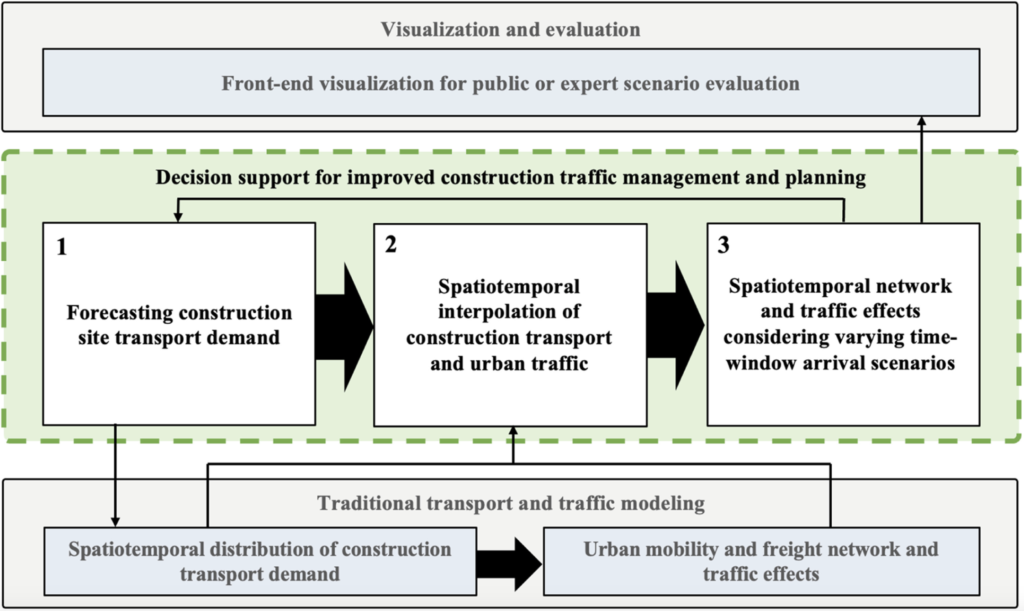Cities continually face the challenge of urban densification, necessitating ongoing construction, renovation, and demolition projects. These activities lead to a substantial influx of heavy goods vehicles (HGVs) into urban areas, yet the specific effects of construction transportation on the urban traffic network remain largely unexplored. This research delves into the spatiotemporal network impacts of construction transport, utilizing traditional traffic and transport simulation methods.

A recent study introduces a comprehensive framework incorporating a simulation model to assess traffic repercussions from varying off-site construction transport demands. It also presents conceptual applications of the simulation model, demonstrating construction logistic planning strategies to mitigate congestion disturbances. This paper marks an initial step in forecasting disturbances, focusing on the impacts of future construction site transport demand from an urban planning perspective. It showcases the feasibility of using the results to reveal congestion, traffic network disruptions, and construction transport arrival scheduling effects in both time and space.
Simulations are executed using detailed secondary datasets describing site-specific transport arrivals from six projects in Norrköping, Sweden. Subsequently, increasing transport demands are evaluated against various time-window arrival scenarios compared to the baseline schedule. These assessments serve as decision support in urban planning, emphasizing how meticulous construction transport planning, especially during non-peak hours, can significantly alleviate traffic congestion.
The study unveils that construction transportation contributes to elevated congestion, with a more pronounced impact at the local level, focusing on specific roads or routes. Considering the total number of construction sites within an area and analyzing individual links emerge as crucial factors when assessing potential disturbances at the municipality level. Additionally, the study underscores the significance of factoring in construction project size, as it offers insights into the volume of HGVs arriving at construction sites and affecting specific areas.
In conclusion, the research emphasizes active construction logistics management, particularly by implementing time-window arrival planning. The results highlight that planning arrivals to avoid peak-traffic hours can alleviate stress on the urban road network. Even maintaining a constant hourly arrival rate at construction sites shows improvements compared to the current baseline delivery scheme. The potential benefits of these planning schemes become more evident with larger HGV demand. The presented planning system contributes valuable knowledge by visualizing the traffic impact of development and traffic plans within the context of urban planning.
